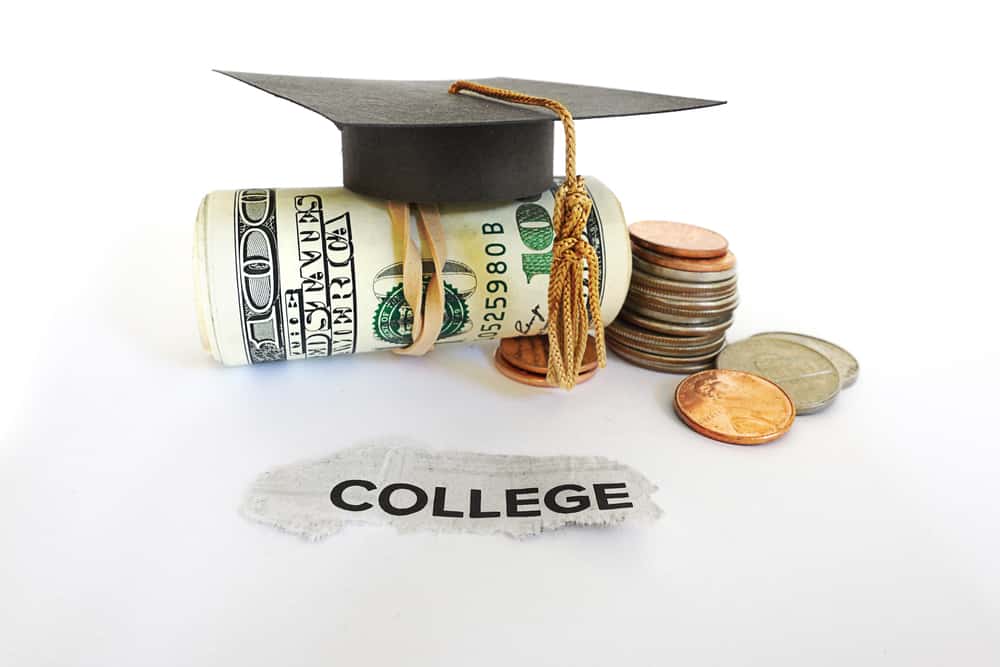More than six in ten (62%) college seniors who graduated from public and private nonprofit colleges in 2019 had student loan debt and they owed an average of $28,950, according to an October 2020 report by The Institute for College Access and Success. But smart planning can help you graduate with less debt.
“The time to reduce your debt is before you incur it, not after you graduate,” says Mark Kantrowitz, senior vice president and publisher of the website Edvisors. He notes that graduating with $33,000 in debt is equivalent to having a $350 monthly car payment for 10 years.

Financial aid officers say there are sources for aid that doesn’t have to be paid back, and more students need to exhaust those resources first. My niece managed to graduate from a state university with no debt by putting together a selection of scholarships and grants.
Pell grants or loans are not the only options. The federal government, states, individual colleges and universities and thousands of private organizations offer grants and scholarships that don’t need to repaid. Some of those are need-based, some merit-based and some a combination. Two other options are ROTC and taking on part-time jobs.
Loans are not free money
If you must borrow, borrow as little as possible. Just because your financial aid package says you can get a $4,000 loan each semester doesn’t mean you should take that much. Can you get by on less?
Kantrowitz advises that the total amount borrowed – for both graduate and undergraduate school – should not exceed the starting salary of your chosen career. That means if you expect to make $50,000 a year in your first job, you should borrow no more than $50,000 for all your education. That formula makes it likely that you can pay off all your debt within 10 years.
“If you’re going to pursue an occupation that doesn’t pay very well, you should borrow less,” Kantrowitz says. Some loan forgiveness programs exist for certain nonprofit and public service jobs, but only some jobs are eligible and only some kinds of loans can be forgiven.
Live like a college student
Another key way to keep down the total amount borrowed is to live frugally while you’re in school, in addition to working summers and during the year if you can. “Live like a student while you’re in school so you don’t have to live like a student when you graduate,” Kantrowitz says.
He notes that a student who spends $10 in borrowed money to buy a pizza each week through four years of college will end up spending $2,000 – which means paying back about $4,000.
Living with parents and going to a local college is one way to cut expenses, as are choosing a cheaper college or university or going to the school that offers you the best aid package.
But even students who go away to college and live in dorms or apartments can cut expenses – having roommates, cooking instead of eating out, buying fewer clothes, buying used textbooks, taking fewer trips home and generally living like a college student.
Graduating in four years or fewer also saves money.
Pick the right loans
All student loans are not equal. If you must borrow, start with the subsidized federal loans, the Federal Perkins Loan and the Subsidized Federal Stafford Loan, which are available to those who meet certain income criteria, Kantrowitz advises. While you are in school, the federal government subsidizes the interest rate.
Those who don’t qualify for those loans may be eligible for an Unsubsidized Federal Stafford Loan, which is not based on income. With that loan, interest begins accruing when the student receives the money. All three loans come with fixed interest rates and are taken out by the student, not the parents.
All those loans have annual and cumulative limits, often not enough to cover tuition and fees at a private school.
The Federal Parent PLUS loan has a higher interest rate and higher fees but doesn’t have a limit. It does, however, require the parent to have a good credit history.
Private student loans usually are more expensive, with higher fees and higher interest rates, which aren’t fixed. They also require payment while the student is still in school, have less flexible repayment terms and require the parents to co-sign.
Edvisors has a chart comparing the different student loans.
The fine print involved with student loans is complicated, particularly for an 18-year-old. But it’s important to read and understand all the documents.
Student loans can’t be discharged in bankruptcy, and the unpaid debt rarely goes away. Wages can be garnished, and credit can be ruined for years. More than 100,000 retirees have unpaid student debt withheld from their Social Security payments, Kantrowitz noted.
Mistakes can be very expensive
One of the biggest mistakes students can make is borrowing money to go to college and then not graduating. That leaves them with the debt and without the degree and the higher-paying job they expected.
This has been a particular problem with for-profit career colleges and certificate programs, where students often take out substantial private loans and then don’t graduate. The problem is severe enough that the federal government and several states are investigating a number of those colleges.
Those who borrow money to attend these kinds of institutions need to be very sure about their career choices and their ability to finish the program and get the degree. They also need to make sure the school is accredited and the program will really help them get the desired job.
Often, the same programs are offered for far less money at community colleges or public four-year schools.
“You’re much more likely to have debt when you graduate from a for-profit college,” Kantrowitz said. “Make sure you understand what you want to be when you grow up. It can be very expensive trying to find yourself at a for-profit college.”
More information
Nearly all colleges and universities have financial aid and student loan information on their websites. Start there. Here are more places to find out about student loans
- http://www.edvisors.com. Comprehensive information about financial aid, scholarships and loans, explained in simple terms.
- http://finaid.org. Articles and comprehensive information about loans, scholarships and other financial aid topics.
- http://www.fastweb.com. Once you create a profile (free), the website sends you information about scholarships for which you may qualify.
- https://studentloans.gov. U.S. government website where you can keep track of and manage your federal student loans as well as get information about repayment plans and other loan topics.
- Debt Free U by Zac Bissonnette. A book on how to get through college without incurring debt by a young man who did it.
